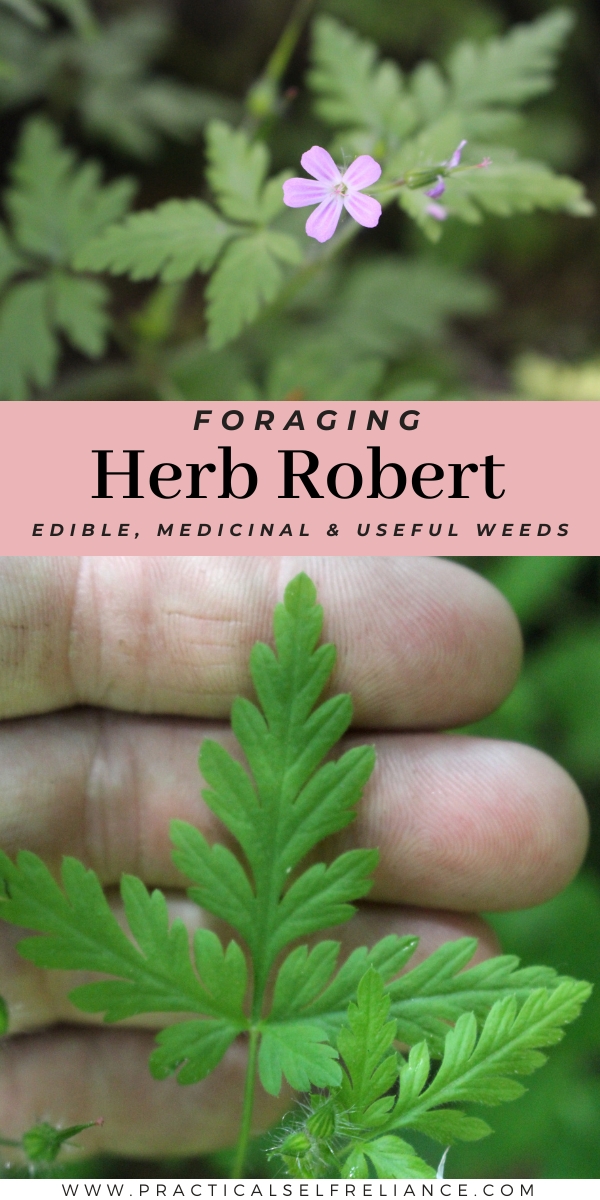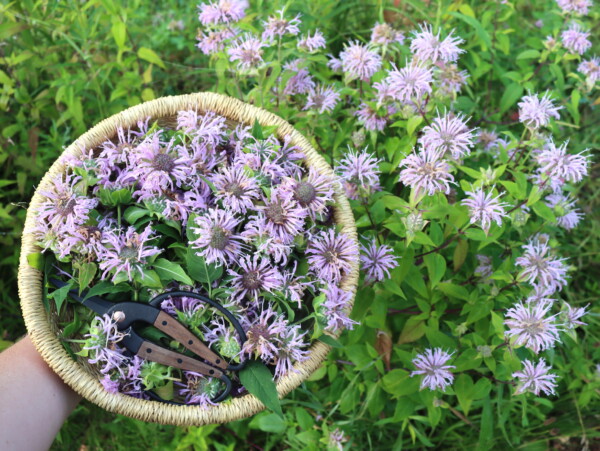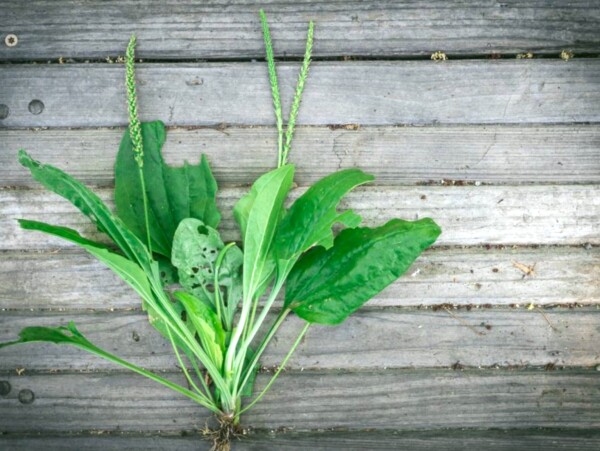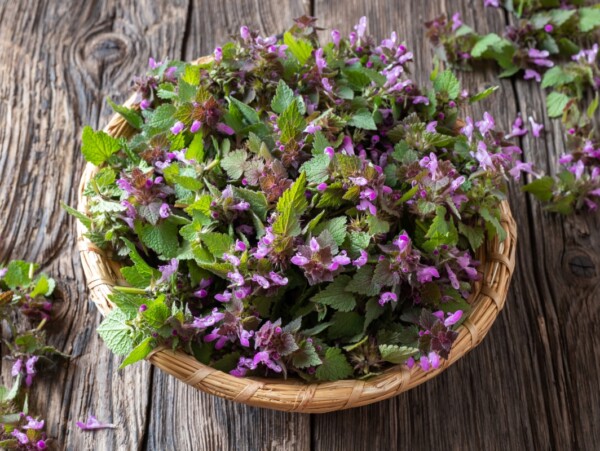Affiliate disclosure: This post may contain affiliate links. Please see our Privacy Policy.
Herb Robert (Geranium robertianum) is an edible and medicinal wildflower related to cultivated geraniums. This shade-loving weed is valued by herbalists and foragers alike.
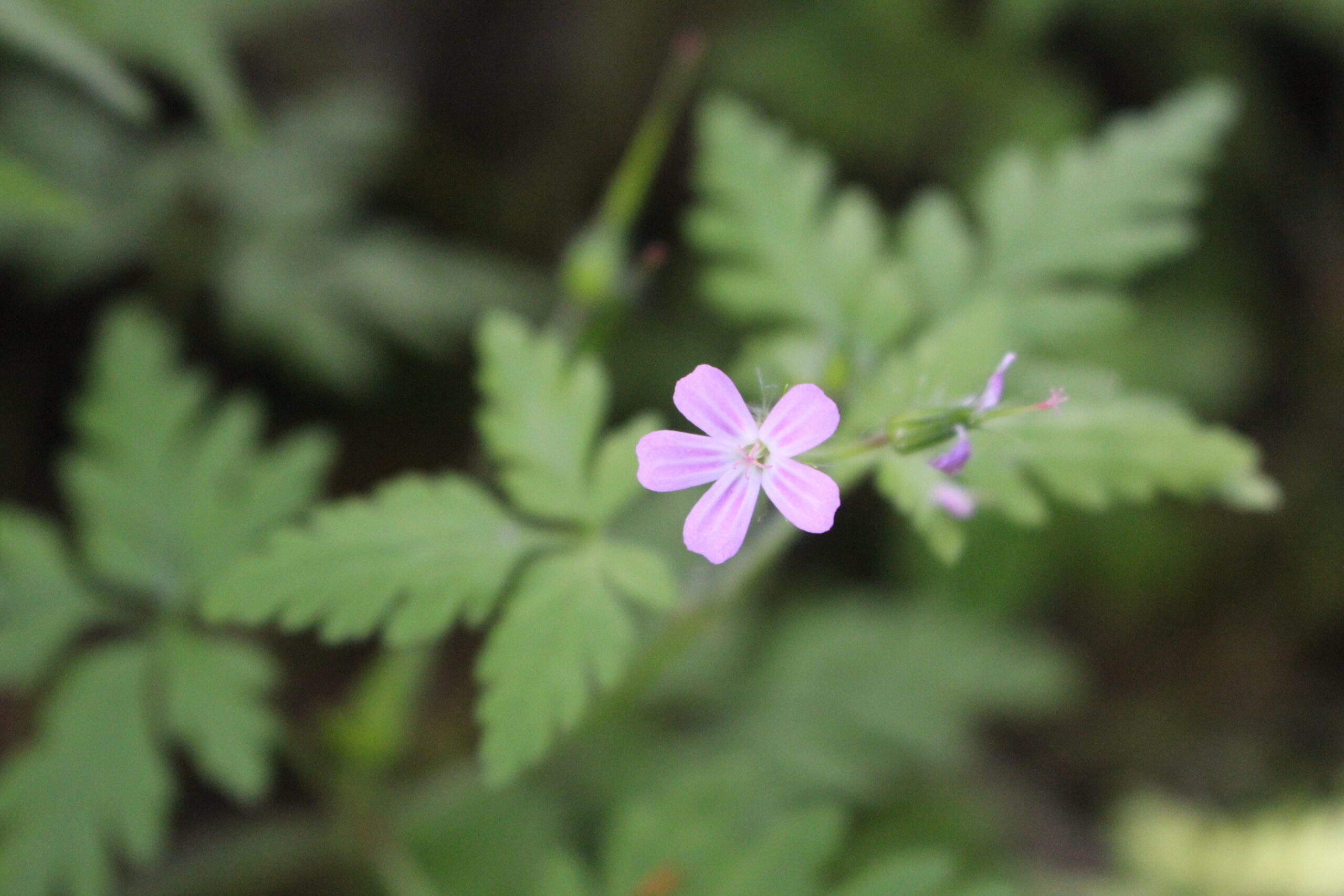
Herb Robert is one of those fun little flowers that you’ll sometimes find in shady places, and the bright pink to purple petals really catch the eye.
It’s especially treasured by herbalists for its medicinal properties, but it also happens to be edible too.
What is Herb Robert?
Herb Robert (Geranium robertianum) is an annual or biennial herbaceous weed in the Geraniaceae or Geranium family. It’s a type of geranium called a cranesbill geranium. It is known by many common names including Robert’s Geranium, Stinky Bob, Fox Geranium, Red Robin, Death-Come-Quickly, Squinter Pip, Stork’s Bill, Jack Horner, Bloodwort, or Crow’s Foot.
Herb Robert is native to Europe and parts of Asia, North Africa, and North America. In North America, Herb Robert is native to the eastern United States and Canada but has naturalized and become invasive in some western states including Washington and Oregon.
Is Herb Robert Edible?
Herb Robert is edible; you can use the entire plant, including the roots. It has a pungent, slightly spicy taste, so folks typically use it sparingly or in medicinal preparations. Medicinally, you can safely use it internally or externally. Herbalists also use the plant to treat ailments in certain livestock like cattle.
Avoid harvesting Herb Robert from areas where it may be contaminated with herbicides, pesticides, exhaust fumes, other chemicals, or heavy metals from railways and roadways.
Herb Robert Medicinal Benefits
Historically, European herbalists used Herb Robert to treat various ailments, including dysentery, gout, nosebleeds, jaundice, liver problems, kidney issues, conjunctivitis, cancer, toothache, upset stomach, and diarrhea. They also used it as an antiseptic and to treat foot and mouth disease in cattle.
Herb Robert leaves often turn red, leading followers of the Doctrine of Signatures, the belief that a plant’s resemblance indicated its medicinal uses, to use the plant to stop bleeding. This usage probably gave the plant one of its common names, Bloodwort. The Doctrine was also applied to the seed pod which looks a bit like a Stork’s Bill, leading to its usage for bleeding after childbirth.
In some areas, people also viewed Herb Robert negatively. The name Death-Come-Quickly refers to a superstition that if you brought Herb Robert into your home, there would soon be a death in the household. Another common name, Crow’s Foot, also has a negative connotation. People of the Medieval period believed that witches used crow’s feet to cast death spells.
Reportedly, some Native Americans of the eastern United States were using Herb Robert medicinally at the time of contact with European colonists. They used the plant for several internal and external uses, including to treat herpes, wounds, and skin conditions.
Today, herbalists no longer widely use Herb Robert, but some of its reported medicinal properties may have been validated by modern research. We know that the plant is rich in tannins and has some antioxidant and anti-inflammatory properties.
A 2023 study published in Pharmaceutics also explored the anticancer and antimicrobial properties of Herb Robert. The study found that Herb Robert showed potential anticancer activity against pharyngeal and colon cancers cells. Researchers also found Herb Robert showed activity against Gram-positive bacteria and selected Candida fungi and noted that this helps to support its usage on hard-to-heal wounds.
Some modern studies have also explored using Herb Robert to help manage and treat diabetes. A 2010 study found that given over four weeks, Herb Robert extract lowered blood sugar levels in rats with type II diabetes.
Further, there has been interest in Herb Robert’s historical usage as an anti-diarrheal. Herb Robert’s antimicrobial activities probably have some effect on specific diarrhea causes. However, scientists found it goes a step further. Herb Robert significantly reduced the episodes and amount of diarrhea in mice with castor-oil-induced diarrhea.

Where to Find Herb Robert
Herb Robert’s native range includes Europe and parts of Asia, North Africa, and North America. You can find it in North America throughout the eastern United States and Canada, where it grows as a native weed, and on the West Coast in Washington and Oregon, where it is considered invasive.
Herb Robert prefers areas with moist soil that receive full to partial shade, but it is quite adaptable and sometimes grows in sunnier places like dry, rocky outcrops. It thrives in neutral to slightly acidic soil (pH between 5.8 and 6.5). You can find it growing in hedgerows, woodlands, forest edges, along railway lines, coastal areas, rocky or scree slopes, gardens, parks, and under power lines.
When to Find Herb Robert
You may find Herb Robert year-round, particularly in warmer climates. Herb Robert spreads exclusively by seed and may be annual or biennial. Some seeds germinate in the fall and overwinter as small rosettes of leaves. Other seeds germinate in early spring.
If you’re hoping to harvest the flowers, these different germination times also mean that Herb Robert has a long blooming period. You may find them from May until as late as October as long as the conditions are good.
Identifying Herb Robert
Herb Robert is a sprawling herbaceous plant with distinctive fern-like leaves that take on a red tinge in late summer and fall. The stems turn bright red around the same time. The plant’s showy bright pink to magenta flowers can be especially helpful for identifying it while it’s in bloom.
Its elongated seed capsules are another helpful clue. When mature, they can eject brown seeds up to 20 feet from the plant and can stick to clothing and animals.
Forager’s often not Herb Robert’s pungent aroma. Some folks liken the smell of the crushed leaves to a chemical fragrance, burnt tires, or a combination of mint and diesel fuel.
Herb Robert can be an aggressive spreader, especially outside its native range, where it sometimes outcompetes native plants. You may find it growing in dense, monoculture mats.
Herb Robert Leaves
Herb Robert has palmate, intricately divided leaves. They are light green to dark green and hairy, often changing to red or becoming tinged with pink or bronze in the late summer and fall. They form oppositely at joints on the stems and may be up to 2.5 inches long. When crushed or rubbed, the leaves give off a strong herbal and chemical aroma.
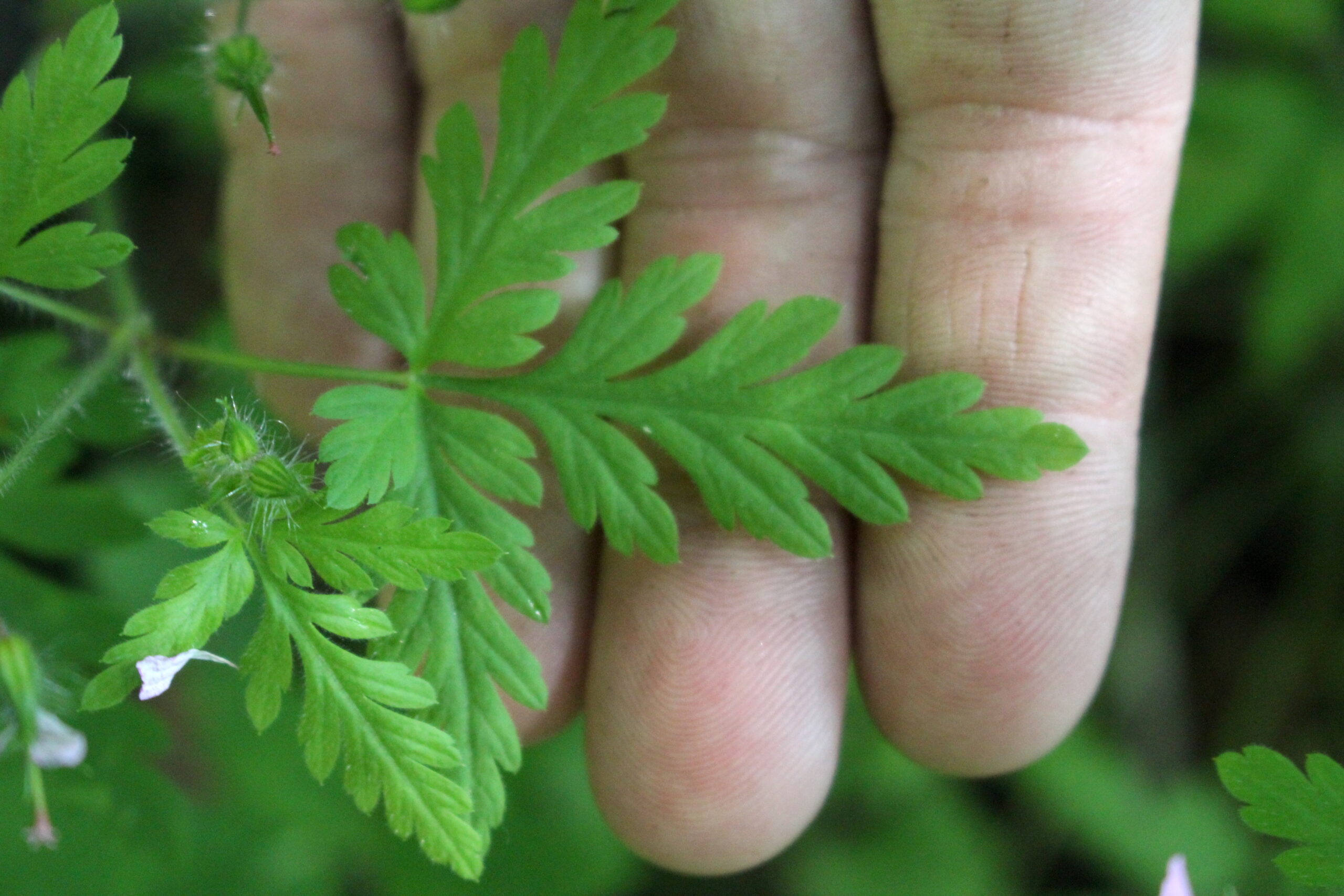
Herb Robert Stems
Herb Robert stems are light green and hairy, usually turning bright red in the late summer and fall. The stems are forked and tend to be brittle and swollen at the nodes. They may reach 2 inches to 1 foot tall.
Herb Robert Flowers
Herb Robert forms showy pink or magenta flowers in May through October. The flowers form above the foliage, often in pairs or groups of four. The flowers are usually about ½ inch in diameter and have five, rounded petals and sepals striped with dark red. Each petal has three white streaks that start at the center and fade towards the edge.
Herb Robert Seeds
After flowering, Herb Robert produces distinct oval seed pods that look like a bird’s beak giving the plant its common name, Stork’s Bill. These seedpods may be more than ½ inch long. As the pods mature and dry, the “beak” will open and forcibly eject five small, oval, brown seeds in different directions up to 20 feet from the plant. The seeds may stick to clothing or animals.
Herb Robert Roots
Herb Robert has fibrous, shallow roots that are easy to pull.
Herb Robert Look-Alikes
Herb Robert can be mistaken for Bleeding Heart (Dicentra formosa). However, there are a few simple ways to tell them apart:
- Bleeding Heart is generally larger and may grow 18 inches tall and about 24 inches wide.
- Bleeding Heart leaves are alternate or rarely sub-opposite.
- Bleeding Heart has fern-like blue-green leaves that lack a chemical fragrance.
- Bleeding Heart has red, white, or pink heart-shaped flowers that form in groups of 5 to 15 at the tops of leafless, fleshy stems.
Herb Robert can also be confused with the related Shining Cranesbill (Geranium lucidum). There are a few key ways to differentiate them:
- Shining Cranesbill has glossy, round or kidney-shaped leaves.
- Shining Cranesbill leaves may be palmately lobed or bluntly divided but lack the lace-like quality of Herb Robert leaves.
- Shining Cranesbill leaves are not aromatic.
- Shining Cranesbill flowers have green sepals with a midrib that bows outward to form a ridge.
Herb Robert also looks similar to another of its relatives, Wild Geranium (Geranium maculatum). However, it too differs in a few noticeable ways:
- Wild Geranium’s gray-green leaves are palmately divided, deeply toothed, and 4 to 5 inches wide. They are less intricately divided and delicate-looking than those of Herb Robert.
- Wild Geranium has pink or white flowers 1 to 1 ½ inches across that form in loose clusters of 2 to 5.
- Wild Geranium is a perennial with a long, 2 to 4 inch thick rhizome with scars that show the previous year’s growth.
Ways to Use Herb Robert
You can use Herb Robert as a fresh green or potherb, but you may want to use it sparingly, more like an herb than a salad green. Herb Robert has a pungent odor and strong flavor that may pair well with flavorful dishes like curry, chili, enchiladas, and other recipes that call for herbs like coriander, cilantro, and ginger.
If you don’t love Herb Robert as an edible green, you can also enjoy its medicinal benefits. Herb Robert may have anti-inflammatory, anticancer, antimicrobial, antidiarrheal, and antioxidant properties. You can safely use the entire plant in internal preparations like teas and tinctures as well as external preparations like soaks and poultices. When making these preparations, herbalists recommend using fresh Herb Robert, as it loses some of its potency when dried.
Herb Robert’s strong aroma can come in handy sometimes. Rubbing Herb Robert on yourself can help deter mosquitoes and other biting insects. Some gardeners find that the plant also helps deter rabbits and deer. It makes a beautiful, wildlife-resistant ground cover for shade gardens. Just be sure you’re planting it somewhere it isn’t invasive!
Herb Robert Recipes
- Herb Robert’s strong flavor pairs well with other strongly flavored herbs like basil. Try using your Herb Robert in this Wild Herb Pesto from Delicious From Scratch.
- Use Herb Robert medicinally with this Simple Herb Robert Tea recipe from Tea Pedia.
- For an upset stomach, try this Herb Robert Tummy Tea recipe with a blend of herbs from Karonv. She also includes a recipe for a Herb Robert Detox Foot Bath!
- If tea isn’t your favorite, you can make an easy-to-take Herb Robert tincture. Use these directions for making tinctures from Mountain Rose Herbs. Remember that it’s best to use Herb Robert when it’s fresh.
